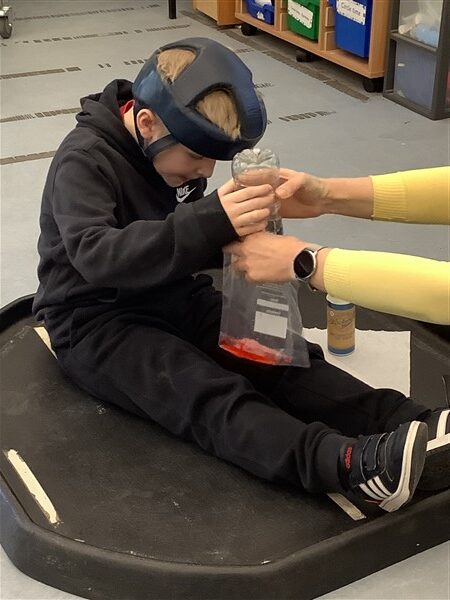St Andrews Day Celebrations In Room 5
Today in Room 5 we celebrated St Andrews Day!
We played a traditional game of Toss the Wellington boot! All of the boys tried their best to toss the boot into the air and get it the furthest across the room. With a little bit of help Ollie won!! Well done Ollie.
Then this afternoon we took part in some traditional Scottish dancing. Everyone in class decided to get into the spirit of things dressing with a touch of tartan showing off their best moves on the classroom dance floor.
We then enjoyed a social snack with friends tasting some shortbread biscuits and a small drink.
Everyone in Room 5 had a great time and through these fun activities we explored some of the traditional aspects of life in Scotland.
A brief History of St Andrew
St Andrew has been the patron saint of Scotland for well over one thousands years with people celebrating him since 1000AD. He was only made patron saint in 1320 when Scotland declared independence with the Declaration of Arbroath. Since then St Andrew has been honoured in many ways in Scotland including on the Scottish flag with the St Andrew Cross and the town of St Andrews, thought to be where he was buried, being named after him The reason St Andrew became important for Scotland was because he sums up a lot of characteristics found in Scots. St Andrew, who was a fisherman, had a humble upbringing and was known though his entire life for being generous and strong. His philosophy was to share everything he had with those less fortunate.
St Andrew always took every opportunity he had to help others – and that’s why he was chosen as their patron saint. St Andrew is also the patron saint of Greece, Romania, Russia and Barbados. He became one of Jesus’s disciples and one of the Twelve Apostles. He was also the brother of St Peter, who founded the Catholic church, so the Scots were able to petition the Pope in 1320 for protection against English kings’ attempts to take over Scotland. St Andrew died on an X-shaped cross in Greece, now known as the Saltire or the St Andrew’s Cross. It is believed that after his death his remains were moved to Constantinople hundreds of years later.
Like many early Christians, St Andrew was crucified by the Romans because they didn’t like Christians very much. St Andrew was the first bishop in Greece, and the Romans weren’t too happy about that. His remains were moved again in the 13th Century to Amalfi in Italy. Most of St Andrew is still there today but bits of him have been moved over the years to Scotland. These include his tooth, kneecap, arm and finger bones, which have been in Scotland now since the 16th Century. While his shoulder blade was gifted by the Archbishop of Amalfi in 1879 and Pope Paul VI gave Scotland more bits in 1969. Legend has it that St Andrew’s first bits ended up in Scotland thanks to St Rule or St Regulus, a Greek monk who had a vision in which he was told to take the bits to the ends of the earth for safekeeping. His journey took him to the shores of Fife, which is easy to mistake for the ends of the earth. The town where St Rule landed is now St Andrews.



































